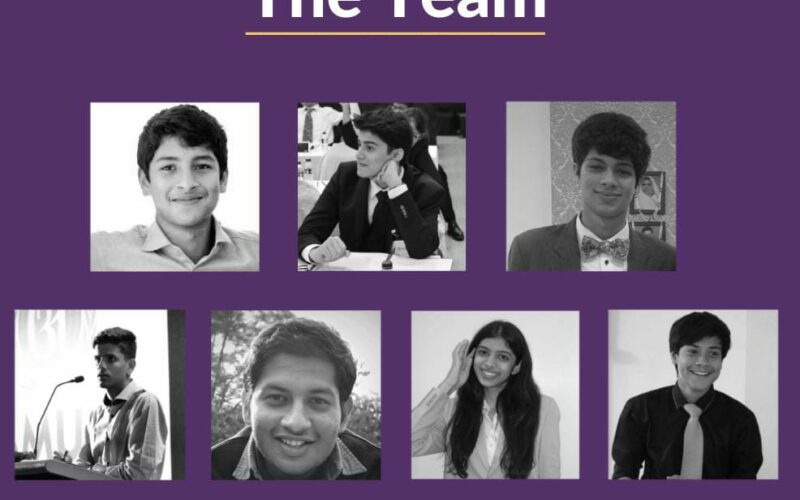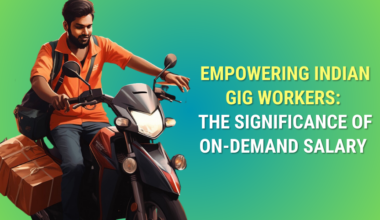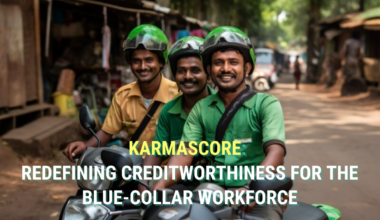This summer, the Ashoka Consulting Club, the official Consulting Club from Ashoka University, worked with KarmaLife AI on an eight week long live engagement. This engagement comprised three separate projects linked to short to medium term goals. This joint blog by the students talks about their learnings and overall experience working with KarmaLife.
A framework for an alternative credit builder model
The key idea we were working on for this project was to establish informed hypotheses for how alternative forms of data could predict financial responsibility and creditworthiness of gig workers. These workers have varied work patterns, and it is these trends that KarmaLife maps to predict larger financial habits. For example, workers that work consistently as opposed to those working across multiple, erratic absences, are perhaps more likely to be financially responsible. Similarly a worker with a consistent earning level as opposed to someone with a fluctuant salary may have a higher likelihood of repaying borrowed credit. We worked on two areas: finding additional insights that can be generated from the data that KarmaLife captures, and developing a potential gamification roadmap to incentivize deeper credit usage.
We first tried to understand how the traditional mechanism of credit lending has functioned. Traditionally, in order to assess any user’s credit worthiness or ‘credit score’, data such as account information (i.e., name of lenders, amount of borrowing, type of credit) and credit enquiry information (i.e., the number of times the person has enquired about a loan or a credit card) were required. At KarmaLife, work, mobile and transaction data is being used in place of these traditional signals to enable short term liquidity. Our focus was on use of mobile data captured at an anonymised level with user consent might predict risk behavior and personalise financial solutions that were more medium term. We started by researching the Indian gig economy to understand common types of recurring expenditures, worker credit requirements, and then best practices for creditworthiness assessment. We understood that these workers rarely save any money which makes it hard for them to purchase even essential assets like a mobile phone, thus prompting us to come up with a mobile phone financing scheme.
Having come from a liberal-arts background, we found it rewarding to distill insights from a global review of empirical studies highlighting the potential of using mobile data signals in providing small ticket credit. This existing academic literature helped us in deciding which data signals to prioritize in analyzing an individual’s risk of default. For example, we learnt that mobile data signals become a lot more effective in predicting a borrower’s default possibility when this data is used along with social and demographic indicators. Given that there is massive smartphone penetration in India, using these indicators can serve as a big opportunity to improve financial inclusion.
We also explored schemes, offers & rewards KarmaLife could provide to incentivize the customer or partner organisation. This included the type of incentive (like eligibility for additional credit), positive nudging strategies (communicating progress to users) & how to best integrate into current priorities. In the end, we explored short (e.g., mobile data financing), medium (e.g., smartphone financing) & long term (e.g., two wheeler financing) schemes focusing on feasibility & worker response.
A lean psychometric assessment
Another set of us were given the task of building a lean psychometric assessment to assess a user’s creditworthiness. This included researching relevant personality traits, identifying the best practices while administering psychometric surveys amongst gig workers, and finally building a psychometric framework for KarmaLife to incorporate in its product-user journey.
We wanted to design a psychometric test that measured various personality traits in order to determine a user’s creditworthiness. For example, if a user fills the survey and ranks very low on our test then it might mean they are less likely to repay back the money and therefore not very credit-worthy. After conducting an extensive literature review, we zeroed in on four personality traits for the test: conscientiousness, self-control, risk-appetite, and locus of control. We created a question bank based on these traits.
The next step was to pilot the questions, but in order to make our test user-friendly, we had to tailor it to our target audience. We incorporated images, GIFs and other visual elements into the survey while keeping the language simple to account for users’ education levels and linguistic barriers. Then, for our piloting process, we translated our simplified questions into the regional language and approached KarmaLife users telephonically to administer the survey and get feedback. We mapped out initial reactions, comprehension of questions, understanding the purpose of survey, response rate, and the effectiveness of the mode of delivery.
At the end of this process, we had undertaken a deep dive into the world of psychometry and its role in credit-lending. Through our research we tackled theoretical constructs and balanced them out against the feasibility of implementing a survey based on those constructs. Our work showed us that a psychometric test can be extremely beneficial as an alternative data point for KarmaLife, but implementing that data at-scale is a tough challenge due to differing understanding of questions which affects scores.
User engagement and retention through data analysis
The third project for us involved building a framework to measure and improve user engagement on the platform. In order for us to get a feel of the end-user experience, we began by learning how Karmalife’s credit system works. This was essential to figure out what exactly engagement is and how we were going to define, measure and improve it. After getting a general idea of how users transact on the platform, we began analysing user data to get into the details.
We learnt that Karmalife’s user base is highly diverse and operates across different tiers. We thus worked on normalising data to draw insights on an aggregate level. We identified various metrics and parameters to measure engagement, and worked on creating a user engagement model based on the same. Our work also entailed identifying key patterns common to various users, in order to recognise similarities and differences, which could help users engage better with the app. Working alongside the Karmalife team helped us develop our analysis and think about innovative metrics to use, and novel ways to measure them.
Through this project we were able to identify and explain potential reasons for varying engagement, articulate applications of our user engagement model, and recommend certain data-driven strategies.
Overall, working with KarmaLife over the last two months has been a tremendous learning experience for each one of us from the Ashoka Consulting Club. We were able to get firsthand insights into the working of a fast-growing startup and a brief understanding of the FinTech world as well. What stood out most for us was that unlike a college setting where we have pre-defined goals and assignments, the projects we undertook had tasks without a set definition or goal. The work we did with KarmaLife was much more dynamic as we created our own objectives, final goals and even methods to achieve them, which was an entirely new learning experience. We are extremely grateful to have contributed to KarmaLife’s mission of improving credit access to millions, and hope our contributions will serve their larger purpose of financial inclusion!






